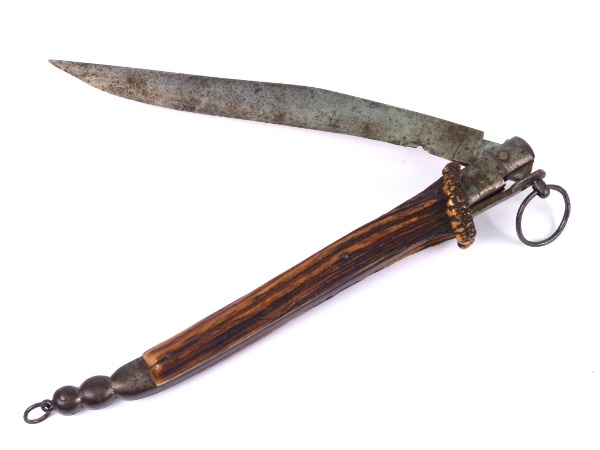Ancient Roman Swords: At first, the weapons used by the Romans were based on ancient weapons used by the Greeks and Etruscans. During Roman conquest, other weapons were adopted by the Roman army. Ancient Romans borrowed their weapon designs from the Celtic people and from the Carthaginians.

One of the weapons carried by an ancient Roman soldier was a sword. It was a powerful weapon used during the 3rd BC. It was long-pointed and double-edged Iberian weapon called the “Spanish sword”. With the passing of time, the ancient Romans also made changes to the basic design of the sword.
Mainz and Pompeii Gladius
Gladius is the general word for the sword in Latin. First Roman Gladius swords were based on Spanish sword designs and were called “Gladius Hispanensis”. These were followed by slightly different sword designs such as the Mainz Gladius and Pompeii Gladius.

In addition to Gladius other longer swords were used during the Roman Empire. These were used mainly by the Roman cavalry who needed longer swords. Such Roman Swords were called Spatha. Shorter versions of this swords were used as well and these were called semistate.
The soldier’s main weapons were a short sword for stabbing (gladius) and a long spear called a javelin for throwing (pilum).
roman spatha
The Roman cavalry used a much longer sword, the so-called spatha. Towards the end of the second century, that spatha gradually replaced the short sword also for the infantry. Its Length was 75 cms and longer.
The shape of the blade is not easy to distinguish from the Germanic swords of the period. However, there are two exceptions: The first-century spatha looking like a longer gladius Pompeianus and the later third-century spatha type Lauriacum-Hromowka:

The Roman Gladius was the sword of choice for the legions. Two primary weapons were carried by each soldier: a pilum or Pila (plural) and the gladius, a short thrusting sword used in close combat.
Part of what made the Roman army such an effective fighting force on the battlefield was the success of the gladius. Its relatively small and light size made it perfect for stabbing in close combat. In combination with the Roman shield, the scutum, the legionnaire was a deadly fighter.

Although in later centuries most swords would be worn traditionally on the left side, the gladius was worn on the right side. This allowed the wearer to draw with the right hand and at the same time carry a heavy shield in the left hand. This can be confirmed by the depictions of Roman soldiers on tombstones, wall paintings, and friezes.
How to make a Roman swords
By the time of the Roman Republic (c.509-44BC), the use of steel in the manufacture of swords was well advanced and Roman sword smiths smelted iron ore and carbon in a bloomery furnace (the predecessor of the blast furnace).

The temperatures in these furnaces could not achieve the high levels required to fully melt the iron ore, so the swordsmith had to work with pieces of slag (residue left after smelting) or bloom (mass consisting mostly of iron), which were then forged into the required blade shape.
These pieces or strips of cooling metal were welded together for increased blade strength. During this process, the owner’s initials or full name were sometimes engraved onto the blade.
More info on- Gladiators weapon, Empire Weapons




